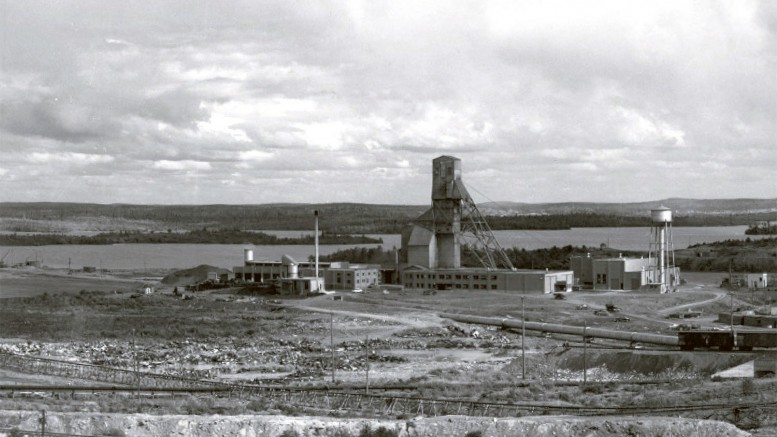Quebec-focused developer Falco Resources (TSXV: FPC) has released the results of an updated feasibility study on a development of the Horne 5 deposit below the historic Horne mine in the Rouyn-Noranda area of Quebec.
The study outlines a 15-year underground operation using an existing shaft with a processing facility recovering gold, silver, zinc and copper. A surface mill would process an average of 15,800 tonnes of material a day once ramped up. The process plant would generate doré bars, as well as zinc and copper concentrates. Production is estimated to average of 220,300 payable gold ounces a year, at average all-in sustaining costs of US$587 per oz., after by-product credits.
With a total capital cost estimate of US$844.2 million, and based on US$1,600 per oz. gold, US$21 per oz. silver, US$3.20 per lb. copper and US$1.15 per lb. zinc, the after-tax net present value for the project comes in at US$761 million, at a 5% discount rate, with an 18.9% internal rate of return.
President and CEO Luc Lessard noted how the project by-products and automated operations are expected to contribute to the low costs profile.
“The Horne 5 project demonstrates robust returns from average annual gold production of 220,300 oz. over a 15-year mine life,” he said in a press release. “The significant copper and zinc by-product credits from the copper and zinc production, as well as the highly automated modern operations result in a low projected all-in sustaining cost of US$587 per ounce. The project benefits from strong existing infrastructure in the world-class Rouyn-Noranda mining area.”
Lessard sees production restarting at the site in the second half of 2025.
The Horne 5 deposit is between depths of 600 and 2,300 metres; an existing shaft, that extends down to 1,200 metres, would need to be rehabilitated to access the reserves. In order to use the shaft, Falco needs to enter into an operating license and indemnity agreement (OLIA) with infrastructure owner Glencore (LSE: GLEN).
While Falco holds the mineral rights below 200 metres on the mining concession and surface rights around the Quemont shaft, the major owns the mining concession. Thus, to access Horne 5, the developer needs to secure licenses from Glencore, “which may not be unreasonably withheld.”
Horne 5 lies within 700 metres of Glencore’s Horne copper smelter.
The project is not subject to a federal-level environmental assessment; the company is completing studies that lead up to a public consultation process, required by Quebec legislation. Falco also plans to submit applications for an authorization for pre-production dewatering; the dewatering is expected to take approximately two years to complete.
Updated project resources, based on a $55 net smelter return cut-off include 105.6 million measured and indicated tonnes at 1.44 grams gold per tonne, 14.32 grams silver per tonne, 0.17% copper and 0.79% zinc (2.25 grams gold-equivalent per tonne). Inferred resources add 24.3 million tonnes grading 1.35 grams gold per tonne, 21.4 grams silver per tonne, 0.19% copper and 0.67% zinc (2.23 grams gold-equivalent per tonne).
The Horne mine, operated by Noranda, produced 11.6 million oz. of gold and 2.5 billion lb. of copper between 1927 and 1976.


Be the first to comment on "Falco updates feasibility on low cost Horne 5 gold project"